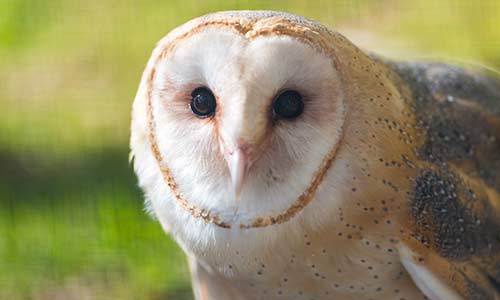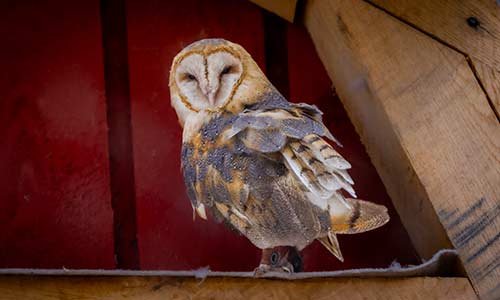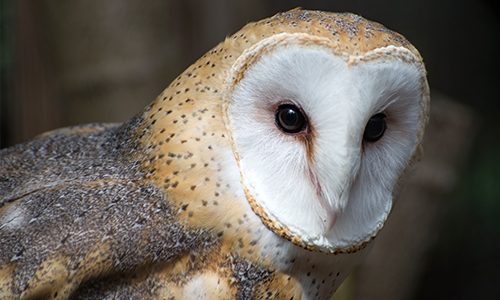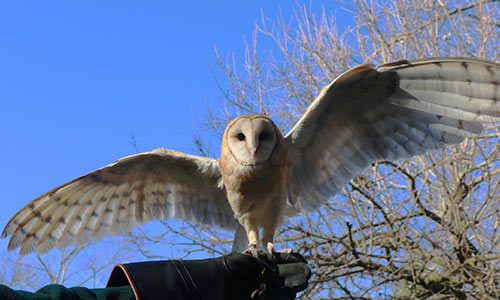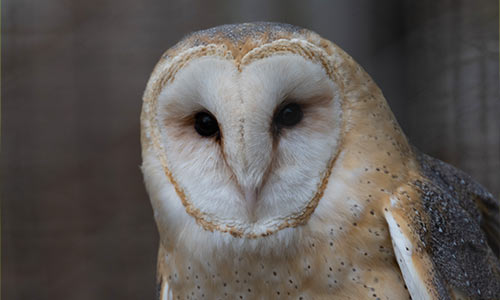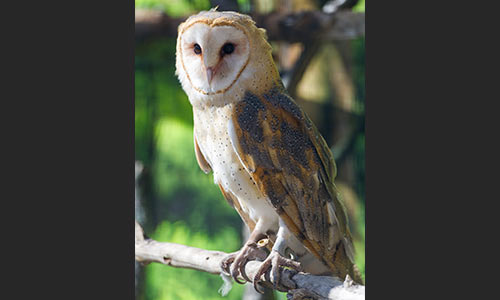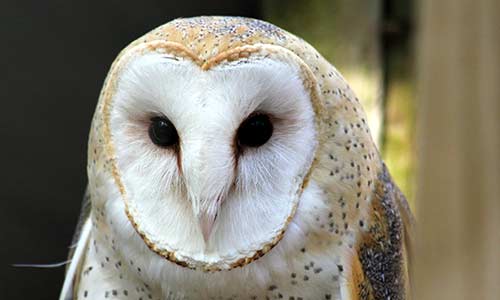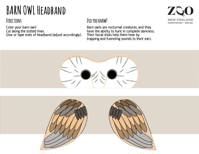Barn Owl
Tyto alba
About the Barn Owl

Geographic Range:
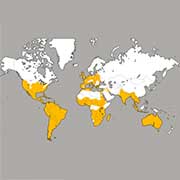
Class: Bird
Order: Strigiformes
Family: Tytonidae
Genus: Tyto
Species: alba
The barn owl has long legs and a heart-shaped white face formed by a stiff facial disk. The owl is found nearly worldwide in tropical and temperate regions and on every continent except Antarctica. Whether making its home in open country, groves, farms, barns, towns or cliffs, the barn owl is great at pest control: a pair of the birds can kill about 1,000 mice in the span of a year.
Barn Owl Facts
Appearance:
This owl is long legged with a white, heart-shaped face formed by a stiff facial disk. Owls have dark eyes and lack ear tufts. Their upper plumage is rusty or golden-buff with un-streaked whitish or pale cinnamon underparts. Their backs have visible lighter spots, and they have darker spots on their chest and belly. Males have whiter chests than females. Barn owls' soft plumage and fringed wing feathers help muffle the sound of their feathers when flying, allowing them to silently stalk prey.
The owl has exceptionally keen hearing and eyesight, making it an effective hunter. It can see during the day, but its eyes are forward-facing (like binoculars) and are better adapted for night vision. Like all owls, they can't move their eyes within their eye sockets, instead rotating their head to focus on different locations.
Owls' ears are asymmetrically located under feathers on the sides of their head; one is level with the nostril and the other is higher, nearer the forehead. The owl's ability to locate prey by sound alone is the best of any animal that has ever been tested.
Size:
- Females are larger than males.
- Length: 12.5 – 15.5 inches with a wingspan of 4 – 4 ½ feet
- Weight: 15 – 20 ounces
Diet:
Prey almost exclusively on small rodents, in fact, a pair of barn owls can kill approximately 1,000 mice in one year.
Reproduction:
There’s no specific breeding season for these owls; it’s dependent on the available food supply. Barn owls are generally monogamous (one mate). They're sexually mature at 1 year of age and, because they have a short lifespan, they breed only once or twice. Females typically lay between four and six eggs (they can lay as many as 15) over several days, a process known as asynchronous hatching. Eggs are laid in tree cavities or available nesting sites like barns (earning their namesake) or abandoned buildings. Nests are generally used repeatedly by other barn owls. Eggs incubate for 31 days, and young are fledged (develop wing feathers large enough for flight) at three months.
Behavior:
Barn owls are nocturnal creatures, and they have the ability to hunt in complete darkness. Their facial disks help them hear by trapping and funneling sounds to their ears. One ear is located slightly higher than the other. This allows the sound to arrive a split second apart between the two ears, enabling the owl to better locate the sound’s source. They communicate with shrill rasping hisses and screams. Owls are effective predators in controlling pests, often to their own detriment. Sadly, barn owls often die from eating poisoned rodents.
Habitat/Range:
One of the most widespread owls living in open country, groves, farms, barns, towns, and cliffs. Found nearly worldwide in tropical and temperate regions and on every continent except Antarctica.
Median Life Expectancy:
Up to 11 years, but average is only 2 – 5 years
You Can Find This Animal in the Windows to the Wild
Owl Chat
Join us daily at 12:30 p.m. for an Owl Chat!
You May Also Like
At Franklin Park Zoo:
At Stone Zoo:

